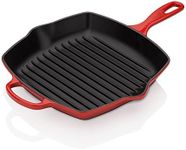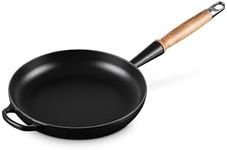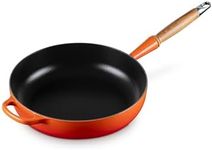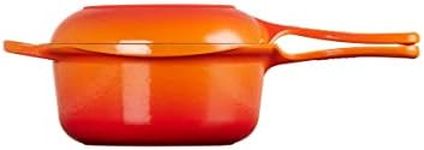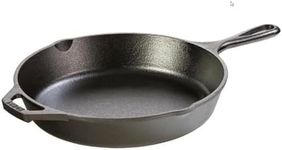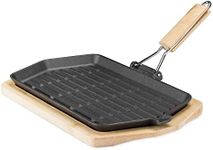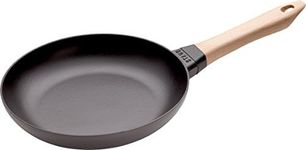Buying Guide for the Best Cast Iron Pans
Choosing the right cast-iron pan can significantly enhance your cooking experience. Cast-iron pans are known for their durability, heat retention, and versatility. They can be used for a variety of cooking methods, including frying, baking, and even grilling. When selecting a cast-iron pan, it's important to consider several key specifications to ensure you get the best fit for your cooking needs.SizeThe size of a cast-iron pan is crucial because it determines how much food you can cook at once. Sizes typically range from small (6-8 inches) to large (12-14 inches). Smaller pans are great for individual meals or side dishes, while larger pans are ideal for family-sized portions or cooking multiple items at once. Consider your typical cooking volume and the number of people you usually cook for when choosing the size.
WeightCast-iron pans are generally heavier than other types of cookware due to their dense material. The weight can affect how easy the pan is to handle, especially when it's full of food. Lighter pans (around 4-6 pounds) are easier to maneuver but may not retain heat as well as heavier ones (8-10 pounds or more). If you have difficulty lifting heavy objects, opt for a lighter pan, but if you prioritize heat retention, a heavier pan might be better.
Handle DesignThe handle design of a cast-iron pan can impact your comfort and safety while cooking. Some pans have a single long handle, while others include an additional helper handle for better grip and control. Long handles can get hot, so look for pans with heat-resistant handles or use oven mitts. If you often move your pan from stovetop to oven, a helper handle can make this easier and safer.
Pre-seasoningPre-seasoning refers to the initial layer of seasoning applied by the manufacturer to prevent rust and create a non-stick surface. Some pans come pre-seasoned, while others require you to season them yourself. Pre-seasoned pans are ready to use right out of the box, which is convenient for beginners. If you prefer to customize your seasoning or enjoy the process, an unseasoned pan might be a better choice.
Cooking SurfaceThe cooking surface of a cast-iron pan can be smooth or slightly textured. Smooth surfaces are easier to clean and provide a more uniform cooking experience, while textured surfaces can add extra grip for certain foods. If you plan to cook delicate items like fish or eggs, a smooth surface is preferable. For searing meats or creating a crust, a textured surface can be beneficial.
CompatibilityCompatibility refers to whether the cast-iron pan can be used on different types of cooktops, including gas, electric, induction, and even open flames. Most cast-iron pans are versatile and can be used on any cooktop, but it's always good to check. If you have an induction cooktop, ensure the pan is induction-compatible. This spec is important for ensuring you can use the pan with your existing kitchen setup.

